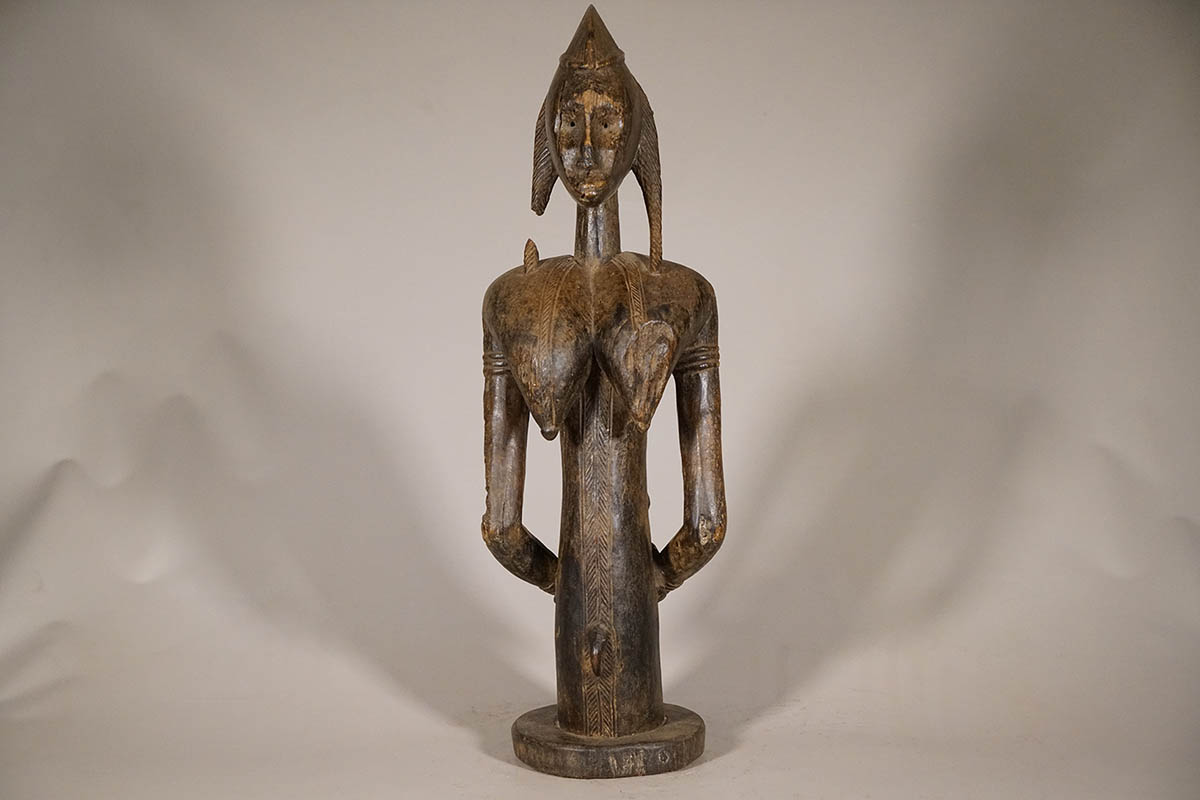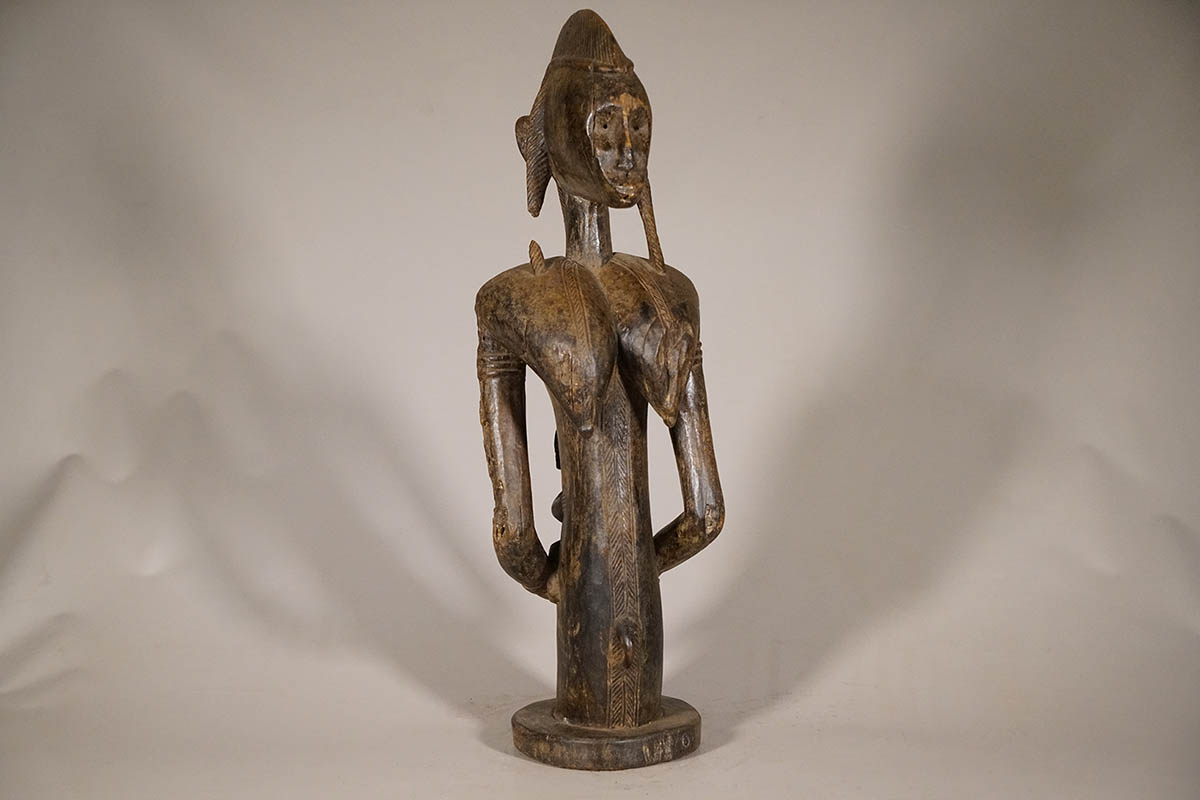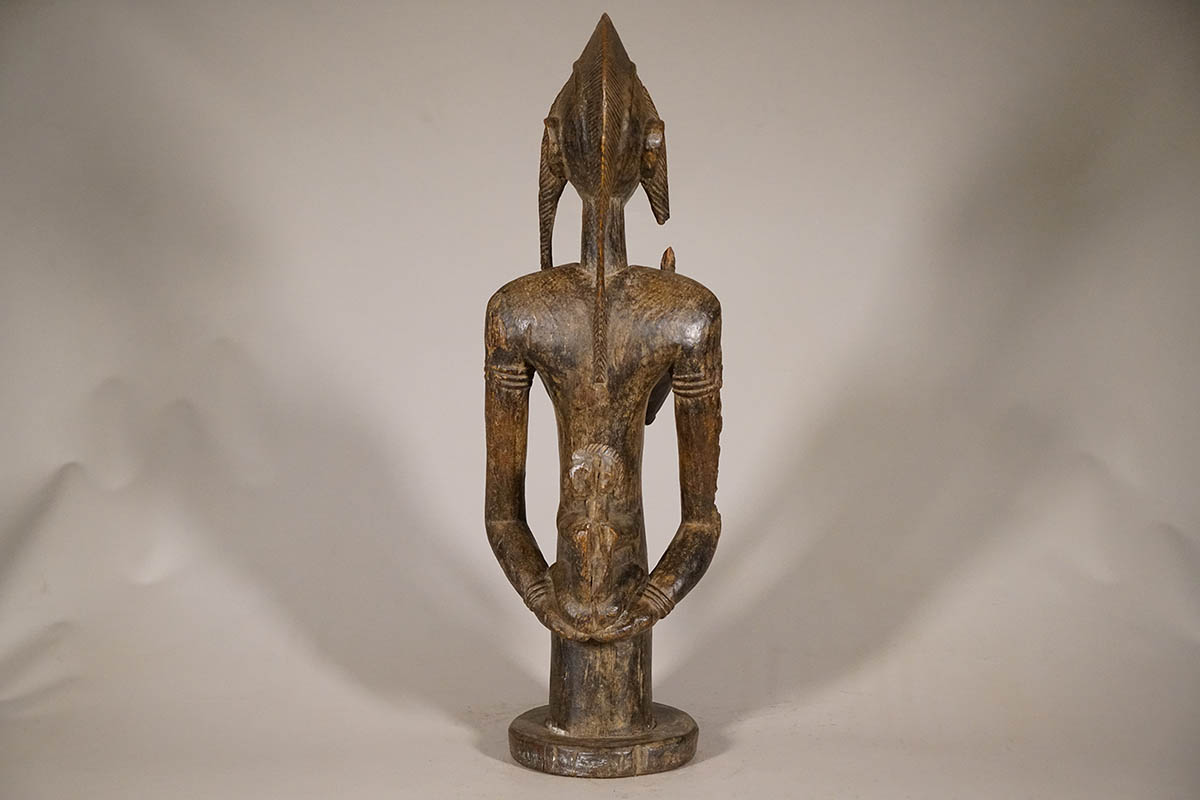A beautifully carved Bamana maternity figure. The statue features a woman with a child on her back. The patina on this piece is fairly variegated and appealing. She stands 28″ tall and weighs 14.5 pounds. This piece would make a excellent addition to any home. Part of her coiffure on the right side is partially broken. There is deterioration and wear and tear throughout.
| Type of Object | Figure, statue |
|---|---|
| Country of Origin | Mali |
| Ethnicity | Bamana/Bambara |
| Approximate Age | Unknown |
| Height (Inches) | 28" |
| Width (Inches) | 9" |
| Depth (Inches) | 7" |
| Weight (Pounds) | 14.5lbs |
| Overall Condition | Possible minor imperfections and wear & tear, including but not limited to scuffing, cracking and minimal chipping. Possible previous repairs. See photos or inquire for more details. |
You must be logged in to post a review.
Tribe Information
About the Bamana People
“The 2,500,000 Bambara people, also called Bamana, form the largest ethnic group within Mali and occupy the central part of the country, in an area of the savannah. They live principally from agriculture, with some subsidiary cattle rearing in the northern part of their territory. The Bambara people are predominantly animists, although recently the Muslim faith has been spreading among them. The Bambara kingdom was founded in the 17th century and reached its pinnacle between 1760 and 1787 during the reign of N’golo Diarra is credited with conquering the Peul people and in and in turned claimed the cities of Djenne and Timbuktu. However, during the 19th century, the kingdom began to decline and ultimately fell to the French when they arrived in 1892. For the most part, Bambara society is structured around six male societies, known as the Dyow (sing Dyo).”
Source:
Baquart, Jean-Baptiste. The Tribal Arts of Africa. New York: Thames and Hudson Inc. 1998. Print.
Additional Information
About the Bamana Maternity Figure
Motherhood is probably the most important role for a woman in the Bamana tribe, so many sculptures will resemble a mother with child or an expecting mother. Many of these statues would have been made to be participated in annual fertility ceremonies such as “Jo”, an association of young Bamana men and women, or at the rituals of “Gwan”, a related society whose purpose is to help women conceive and bear children. If a woman is having reproduction issues, sacrifices would be made to the figure, or she may raise the statue as if it were her own real child. These pieces would normally be enshrined then washed and oiled before each ceremony.








Reviews
There are no reviews yet.